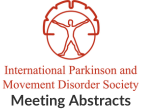Predicting Disease Severity in Friedreich’s Ataxia through Wearable Monitoring and Machine Learning.
Objective: Develop and validate a wearable-based solution for tracking motor function in Friedreich ataxia (FRDA). Background: FRDA is an autosomal recessive neurodegenerative disorder causing progressive…Effects of Transpinal Magnetic Stimulation (TsMS) in Patients Diagnosed with Spinocerebellar Ataxia 3 (SCA 3)
Objective: Ataxia is a neurological condition characterized by impaired coordination, balance, and motor control. While physiotherapy remains a cornerstone in SCA 3 management, emerging therapies such…Phenomenology of Coenzyme Q10-deficiency Spinocerebellar Ataxia: Case Description Of Two Siblings And New Therapeutic Perspectives
Objective: To describe the phenomenology of SCAR9, caused by a homozygotic mutation in COQ8A gene, and to describe the positive effects of a holistic approach…Feasibility and Preliminary Efficacy of a Pilot Telehealth Physical Activity Intervention in Degenerative Cerebellar Disease (Engage-Ataxia)
Objective: This study evaluated the feasibility and acceptability of the Engage intervention in people with degenerative cerebellar disorders (DCD). Background: Physical activity (PA) can be…Safety and Efficacy of Vatiquinone Treatment in Friedreich Ataxia Patients from MOVE-FA: a Phase 3, Double-blind, Placebo-controlled Trial
Objective: Describe the results of vatiquinone from MOVE-FA (NCT04577352), the 72-week placebo-controlled phase 3 study of patients with Friedreich Ataxia (FA). Background: FA, the most…Improvement in Upright Stability subscale of mFARS with Vatiquinone Treatment in MOVE-FA: a Phase 3, Double-blind, Placebo-controlled Trial
Objective: Describe the results of vatiquinone on the Upright Stability Subscale (USS) from MOVE-FA (NCT04577352), the 72-week placebo-controlled phase 3 study of patients with Friedreich…Deep Brain Stimulation of bilateral ventral intermediate nucleus in a patient with spinocerebellar ataxia type 12
Objective: To treat the medication-resistant tremor of SCA12 by Deep brain stimulation (DBS) Background: Action tremor might be the most prominent feature of SCA12 patient…The role of Anti-Ribosomal P antibody in Autoimmune cerebellar ataxia
Objective: To describe the clinical features and presentation of an auto-immune cerebellar ataxia with asymmetric Holmes tremor and its therapeutic response. Background: Autoimmune cerebellar ataxia…Dance for Parkinson’s disease to improve gait and balance: clinical assessments vs. objective measures.
Objective: To evaluate how the dance classes based on the Dance for Parkinson’s Disease®(DfPD®) model could improve gait and balance in people with Parkinson’s disease…Effectiveness of non-invasive therapy of tPCS & peripheral nerve stimulation on Ataxia patients
Objective: A pilot study to determine the effectiveness of a combination of transcranial pulsed current stimulation and pulsed current peripheral nerve stimulation as a novel…
- « Previous Page
- 1
- 2
- 3
- 4
- 5
- …
- 9
- Next Page »
